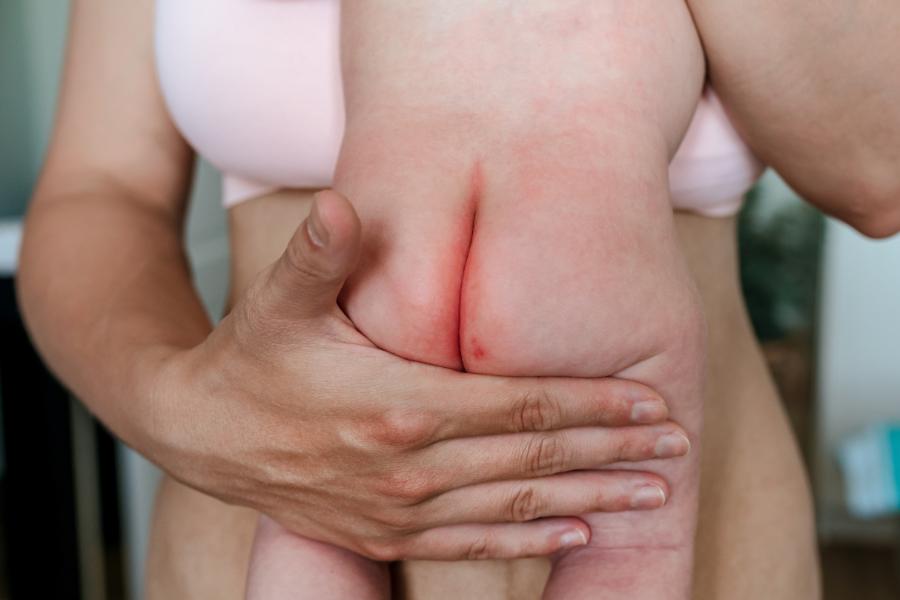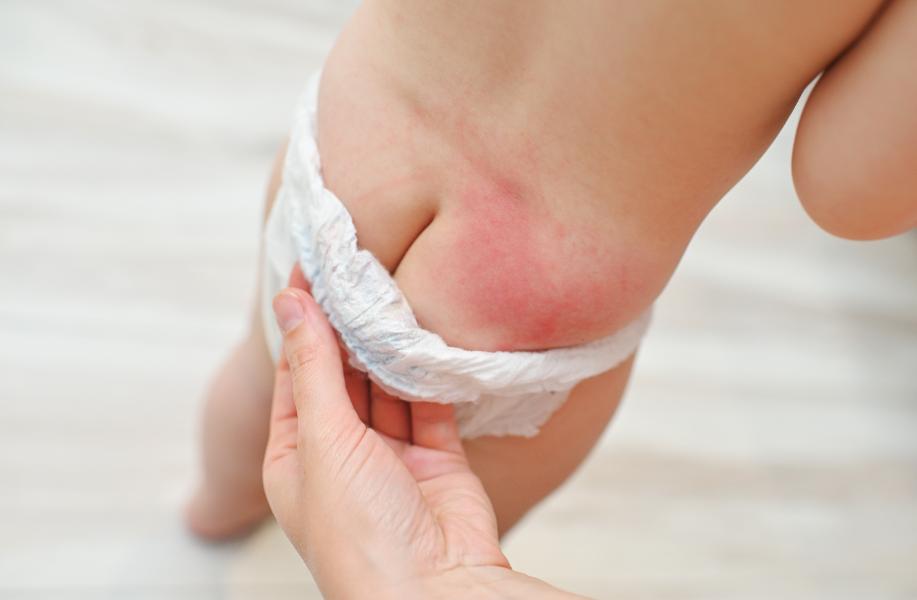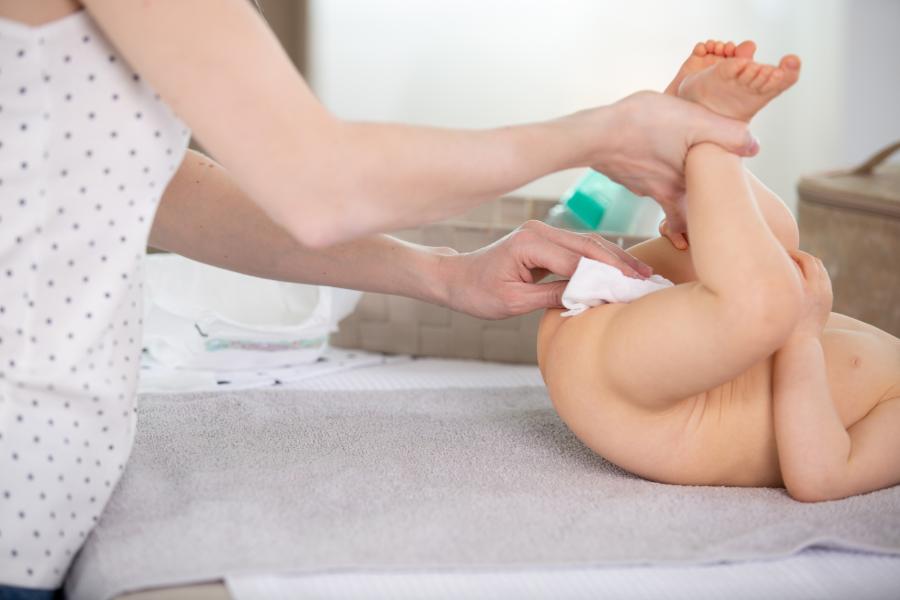
As a parent, few things are as distressing as discovering an angry, red rash on your baby’s delicate skin. Diaper rash is a common condition affecting many infants, often leading to discomfort and fussiness. The good news? It’s typically manageable with proper care. In this guide, we’ll explore everything from what causes diaper rash to how you can prevent it, and most importantly, how to treat it effectively—supported by the latest research.
What is Diaper Rash?
Diaper rash is a form of dermatitis that occurs on the skin covered by a diaper. It manifests as inflamed, irritated skin that can appear red, scaly, and sometimes blistered. While it may be concerning to see, diaper rash is common among infants, particularly within the first 28 days of life, when their skin’s protective barrier is still developing. In fact, research by Visscher et al. (2000) found that diaper rash tends to develop progressively during the first month, as the skin’s epidermal barrier matures .
Common Causes of Diaper Rash
Diaper rash can develop for several reasons, but at the root is irritation to your baby’s sensitive skin. Here are some of the most common causes:
- Moisture and Irritation: Prolonged exposure to wetness from urine and feces can lead to irritation, especially when the skin’s protective barrier is already compromised.
- Friction: Continuous rubbing of the diaper against your baby’s skin can wear down this barrier, making it more susceptible to irritation.
- Dietary Changes: As your baby starts solid foods, changes in stool composition may trigger diaper rash.
- Allergic Reactions: Sensitivities to certain diaper materials or wipes can lead to an allergic reaction and subsequent rash.
- Infections: Bacterial or yeast infections, though less common, can cause persistent rashes requiring medical attention.
Recognizing Diaper Rash Symptoms
Identifying diaper rash early can help you address it before it worsens. Here’s what to look out for:
- Mild Rash: Red, inflamed skin that appears puffy and irritated.
- Severe Rash: Blisters, ulcers, or skin that’s peeling or weeping fluid. If you notice bright red skin with small bumps, this could indicate a yeast infection.
If the rash doesn’t improve after a few days of treatment, or if blisters and pus-filled sores develop, consult your pediatrician promptly.
Preventing Diaper Rash
Preventing diaper rash is all about minimizing skin irritation and keeping your baby’s skin dry. Here are a few strategies:
Frequent Diaper Changes
Research supports the importance of frequent diaper changes in minimizing prolonged exposure to moisture, which can help prevent the development of diaper rash . The key is to swap out wet or soiled diapers as soon as possible to keep your baby’s skin dry.
Barrier Creams
Applying a protective barrier cream like zinc oxide or petroleum jelly can create a shield between your baby’s skin and moisture, helping to reduce irritation.
Choosing the Right Diaper
A study by Yuan et al. (2018) found that new material diapers are more effective in preventing diaper rash than standard diapers, particularly in maintaining dryness . If your baby frequently develops diaper rash, switching to a different diaper type could make a difference.
Air Time
Allowing your baby’s skin to air out between diaper changes is a simple and effective method for preventing diaper rash. Just a few minutes of air-drying time can help reduce moisture buildup on the skin.

Treating Diaper Rash
Despite your best efforts, diaper rash can still occur. Here’s how to treat it effectively:
Step 1: Increase Diaper Changes
When diaper rash appears, increase the frequency of diaper changes to keep the skin clean and dry. Even a short period of dampness can worsen the rash.
Step 2: Gentle Cleaning
Clean the affected area with warm water and a soft cloth. Avoid using baby wipes that contain alcohol or fragrance, as these can irritate the skin.
Step 3: Apply Cream
After cleaning, apply a thick layer of barrier cream to protect the skin from further irritation.
Step 4: Air Exposure
Let your baby spend some diaper-free time each day to allow the rash to heal faster.
Topical Treatments
If the rash persists, over-the-counter medications may help. According to Gilliam (1961), diaper dermatitis is often treated with topical creams, including antifungal or antibacterial creams if infections are present .

When to Seek Medical Attention
While most diaper rashes can be treated at home, there are situations where medical care is necessary:
- The rash doesn’t improve within three days of treatment.
- The rash worsens or spreads beyond the diaper area.
- You notice signs of infection, such as fever, blisters, or pus-filled sores.
- Your baby has diarrhea lasting more than 48 hours alongside the rash.
In these cases, your pediatrician may prescribe stronger topical treatments or oral medications to clear up the infection.
Special Considerations
Cloth vs. Disposable Diapers
Choosing the right diaper for your baby can also help prevent diaper rash. While cloth diapers are more breathable, disposable diapers tend to be more absorbent. The study by Yuan et al. (2018) found that new material diapers were particularly effective in keeping moisture away from the skin, reducing the risk of rash .
Recurring Diaper Rash
If diaper rash becomes a recurring issue, it might be worth tracking potential triggers. Whether it’s dietary changes, environmental factors, or sensitivities to certain products, identifying these triggers can help you make adjustments that keep your baby’s skin healthy.
Conclusion
Diaper rash is a common but manageable condition. By understanding the causes, implementing effective prevention strategies, and knowing when to seek medical attention, you can keep your baby’s skin healthy and comfortable. Remember, every baby is different, so it may take some time to find the methods and products that work best for your little one. And, as always, if you’re concerned about your baby’s skin or notice signs of infection, don’t hesitate to consult your pediatrician.
Disclaimer: This article is for informational purposes only and does not replace professional medical advice. Always consult your doctor for medical concerns. Do not delay seeking medical help because of information provided here.
References:
- Visscher, M., Chatterjee, R., Munson, K., Bare, D., & Hoath, S. (2000). Development of Diaper Rash in the Newborn. Pediatric Dermatology, 17. https://doi.org/10.1046/j.1525-1470.2000.01710.x
- Yuan, C., Takagi, R., Yao, X., Xu, Y., Ishida, K., & Toyoshima, H. (2018). Comparison of the Effectiveness of New Material Diapers versus Standard Diapers for the Prevention of Diaper Rash in Chinese Babies: A Double-Blinded, Randomized, Controlled, Cross-Over Study. BioMed Research International, 2018. https://doi.org/10.1155/2018/5874184
- Gilliam, L. (1961). Diaper dermatitis. Pediatric Clinics of North America, 8, pp. 253-6. https://doi.org/10.1016/s0031-3955(16)31080-x

